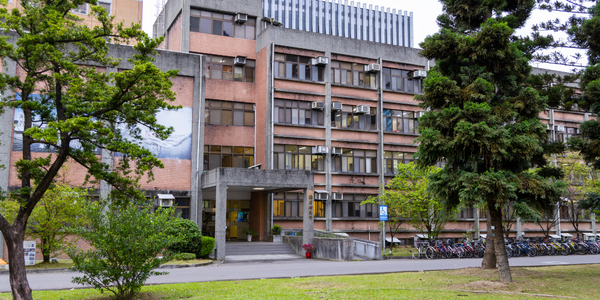技术
- 功能应用 - 车队管理系统 (FMS)
- 基础设施即服务 (IaaS) - 混合云
适用行业
- 建筑物
- 医疗保健和医院
适用功能
- 维护
- 产品研发
用例
- 车队管理
- 智慧校园
服务
- 系统集成
关于客户
该客户是一家领先的健康和福祉组织,致力于为其社区中的每个人提供更好的医疗保健体验。该健康和福祉组织利用其两个创始组织近 90 年的经验和专业知识,通过广泛的健康计划和工具帮助人们找到适合自己的更健康的生活,从而使健康和福祉变得更加容易。该组织拥有 5000 名员工、240 万会员以及占地 522,000 平方英尺的园区,拥有四栋多层建筑。
挑战
2019 年夏天,两家医疗保健组织宣布了合并意向。为了容纳不断壮大的、即将达到 5,000 人的团队,这些组织购买了占地 42 英亩的昂贵地产作为新总部。该地产包括四栋多层建筑,总面积达 522,000 平方英尺。它还拥有一座额外的 14,000 平方英尺的豪宅,拥有该空间的前一家公司将在这里举办活动。新园区代表着新英格兰最大、最具标志性的两家非营利医疗保健公司的合并,这两家公司几十年来一直是竞争对手。规划开设办事处需要为新总部做好混合工作安排的准备。为了简化繁琐、成本密集的办公室搬迁过程,新合并的组织需要一个工作场所管理解决方案,该解决方案可以提供空间规划、战略规划以及房间和办公桌预订功能。而且,与大多数合并一样,该组织必须了解每个实体正在使用哪些现有应用程序和系统可以在未来发挥最佳作用。
解决方案
该组织选择 FM:Systems 工作场所管理解决方案 FMS:Workplace 来创建和确定最佳平面图场景,并选择其房间、资源和办公桌调度解决方案 FMS:Employee 来实现成功的混合工作场所。这些解决方案共同提供了一个图形视图,显示特定 30 天、60 天和 90 天时间段内预留空间的百分比,以确定热点发生的时间和地点。 FM:Systems 合作伙伴 AMS Workplace Technology (AMS) 还被选中将员工徽章数据无缝集成到 FMS:Workplace 环境中,以提供有价值的报告和分析。由于新站点基本上未分配,因此该组织利用 FMS:Workplace 在 AMS 的帮助下配置储物柜分配和跟踪模块,为员工提供安全、可预订的空间,以便在办公室工作日放置其物品。
运营影响
数量效益

Case Study missing?
Start adding your own!
Register with your work email and create a new case study profile for your business.
相关案例.

Case Study
Energy Saving & Power Monitoring System
Recently a university in Taiwan was experiencing dramatic power usage increases due to its growing number of campus buildings and students. Aiming to analyze their power consumption and increase their power efficiency across 52 buildings, the university wanted to build a power management system utilizing web-based hardware and software. With these goals in mind, they contacted Advantech to help them develop their system and provide them with the means to save energy in the years to come.

Case Study
Hospital Inventory Management
The hospital supply chain team is responsible for ensuring that the right medical supplies are readily available to clinicians when and where needed, and to do so in the most efficient manner possible. However, many of the systems and processes in use at the cancer center for supply chain management were not best suited to support these goals. Barcoding technology, a commonly used method for inventory management of medical supplies, is labor intensive, time consuming, does not provide real-time visibility into inventory levels and can be prone to error. Consequently, the lack of accurate and real-time visibility into inventory levels across multiple supply rooms in multiple hospital facilities creates additional inefficiency in the system causing over-ordering, hoarding, and wasted supplies. Other sources of waste and cost were also identified as candidates for improvement. Existing systems and processes did not provide adequate security for high-cost inventory within the hospital, which was another driver of cost. A lack of visibility into expiration dates for supplies resulted in supplies being wasted due to past expiry dates. Storage of supplies was also a key consideration given the location of the cancer center’s facilities in a dense urban setting, where space is always at a premium. In order to address the challenges outlined above, the hospital sought a solution that would provide real-time inventory information with high levels of accuracy, reduce the level of manual effort required and enable data driven decision making to ensure that the right supplies were readily available to clinicians in the right location at the right time.

Case Study
Intelligent Building Automation System and Energy Saving Solution
One of the most difficult problems facing the world is conserving energy in buildings. However, it is not easy to have a cost-effective solution to reduce energy usage in a building. One solution for saving energy is to implement an intelligent building automation system (BAS) which can be controlled according to its schedule. In Indonesia a large university with a five floor building and 22 classrooms wanted to save the amount of energy being used.

Case Study
Powering Smart Home Automation solutions with IoT for Energy conservation
Many industry leaders that offer Smart Energy Management products & solutions face challenges including:How to build a scalable platform that can automatically scale-up to on-board ‘n’ number of Smart home devicesData security, solution availability, and reliability are the other critical factors to deal withHow to create a robust common IoT platform that handles any kind of smart devicesHow to enable data management capabilities that would help in intelligent decision-making

Case Study
Gas Pipeline Monitoring System for Hospitals
This system integrator focuses on providing centralized gas pipeline monitoring systems for hospitals. The service they provide makes it possible for hospitals to reduce both maintenance and labor costs. Since hospitals may not have an existing network suitable for this type of system, GPRS communication provides an easy and ready-to-use solution for remote, distributed monitoring systems System Requirements - GPRS communication - Seamless connection with SCADA software - Simple, front-end control capability - Expandable I/O channels - Combine AI, DI, and DO channels








